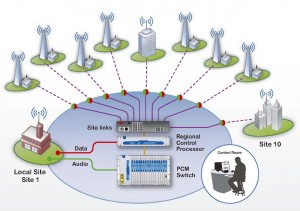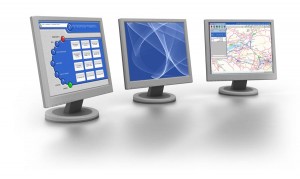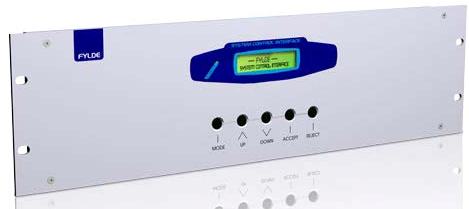MPT 1327 Trunking
MPT-1327 is an industry standard for trunked radio communications networks. It was developed in 1988 by the British Department of Trade and Industry (DTI).
MPT1327 advantages and features
The advantage of MPT 1327 – over TETRA and other systems – is its increased availability, lower cost of equipment, the ease of installation, the familiarity with the equipment, and many believe that MPT 1327 is superior to TETRA, due to its uncompressed FM audio, and greater receiver sensitivity. MPT1327 control channel signalling is more resilient, since the TETRA protocol uses a complex modulation scheme that requires a far higher Signal to Noise ratio to function than 1200bit/s FFSK signalling.
Systems based on MPT 1327 only require one, but usually use two or more radio channels per site. Channels can be 6.25 (Entropia Networks in BeNeLux) 12.5 or 25kHz bandwidth. At least one of these channels is defined as the control channel (CCH) and all other channels are traffic channels (TCs) used for speech calls.
A typical installation will have around 6-10 channels. A 7 channel trunk, correctly engineered, is capable of handling in excess of 3000 mobile units. The capacity of the system increases dramatically with the number of traffic channels. For example, 1 traffic channel with queuing can not handle many customers, perhaps 2 minicabs with 20 mobiles. In effect this would be a CBS with queuing. However, a 7 channel trunked system can handle 40 minicabs with 20 mobiles with ease. The Erlang formulas are typically used for calculating system capacity.
Data messages between mobiles and the network are exchanged on the control channel at 1200 bits per second. Each subscriber in an MPT-1327 trunked radio network has a unique call number. It consists of a prefix (3 digits), the fleet number (4 digits) and the subscriber’s call number within the fleet (2 or 3 digits). After it has been entered the call number will be converted in the mobile to a 20-bit address. For the duration of his call, a subscriber is exclusively allocated a traffic channel from the available trunk. The different types of communications on an MPT-1327 network and their definitions:
Traffic types:
- Mobile-mobile in a cell
- Mobile-mobile in different cells
- Mobile-line access unit via landline or radio
- Mobile-dispatcher station via landline or radio
- Mobile-PABX, Mobile-PSTN
Data Communication:
- Status messages on the CC (5-bit data length)
- Short data messages on the CC (186-bit data length)
- Transparent data transmission on the TC (Non Prescribed Data calls)
Voice calls:
- Point to point connections /
- Group calls with talk entitlement
- Group calls without talk entitlement
The MPT 1327 system infrastructure delivered by Fylde Micro, UK is composed of:
Regional Control Interface FYLDE-2007-RCP-Brochure
The Regional Control Processor is used to connect together up to 10 sites to form a regional coverage network. The RCP performs all the Inter-site call set-up management tasks including PSTN, PABX’s and hard wired dispatchers (MHD).
Single Site Interconnect option (SSIU) FYLDE-2007-RCP-Brochure
The (SSIU) is a low cost cut down version of the RCP allowing connection of a site to the PSTN or PABX. Also available ports to attach an MHD and the system control terminal are included.
System Control Interface FYLDE-2007-SCI-Brochure
The System Control Interface (SCI) operates in conjunction with the TSC Channel cards to form a complete trunking site. The primary function of the SCI is to connect the channel cards to other parts of the network. This could be a system terminal PC for a single-site system, or the Regional Control Processor if a multi-sited wide area network. The SCI additionally provides billing, control, status reports, customer validation and local phone
interconnects.
MPT 1327 Channel Controller FYLDE-2007-TSCC03-Brochure
Specially designed for MPT1327 applications, TSC Channel cards are rugged, reliable, and fast. The TSC Channel card performs the major MPT1327 trunking functions. It can operate on its own as a single channel MPT1327 repeater. No other processors whatsoever are necessary.
Regional PCM Switch – Audio Routing FYLDE-2007-PCM6U
The PCM Switch is installed at the Regional node alongside the Regional Control Processor and in its simplest configuration, allows the routing of audio paths between base station sites. Additionally, the switch may be used to allow patching between base station ports and the PSTN / PABX telephone network as well as Line Dispatcher terminal.
Network Management (SYSCON) FYLDE2007-SYSCON-Brochure
Fylde’s System Control Terminal, SYSCON, operates in conjunction with the infrastructure to provide user management and system control functions. SYSCON offers a full set of diagnostic tools, covering every aspect of network operation.





